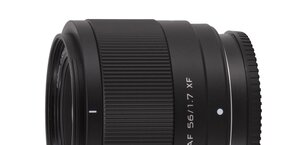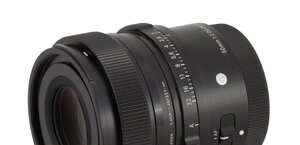Nikon Nikkor AF-S 35 mm f/1.8G ED
3. Build quality
As you can see the Nikkor features the highest number of elements out of the whole group of pretty similar instruments – even more than the stabilized Canon. The optics seems to be more complex compared to its f/2.0 predecessor. The Canon is noticeably wider for a change, has a bigger filter diameter and more aperture blades.
In the photo below the Nikkor 1.8/35G is positioned next to the Sigma A 1.4/35 and the Canon 2/35 IS USM.
Please Support UsIf you enjoy our reviews and articles, and you want us to continue our work please, support our website by donating through PayPal. The funds are going to be used for paying our editorial team, renting servers, and equipping our testing studio; only that way we will be able to continue providing you interesting content for free. |
- - - - - - - - - - - - - - - - - - - - - - - - - - - - - - - - - - - - - - - - - - - - - - - -
 |
The tested lens starts with a metal mount surrounding a contact plate and a rear element, 27 mm in diameter. The element is positioned on the same level as contacts when the lens is set at infinity. When you pass to the minimum focus distance it hides almost 1 cm inside; still the area around it is properly darkened, never revealing any electronic parts.
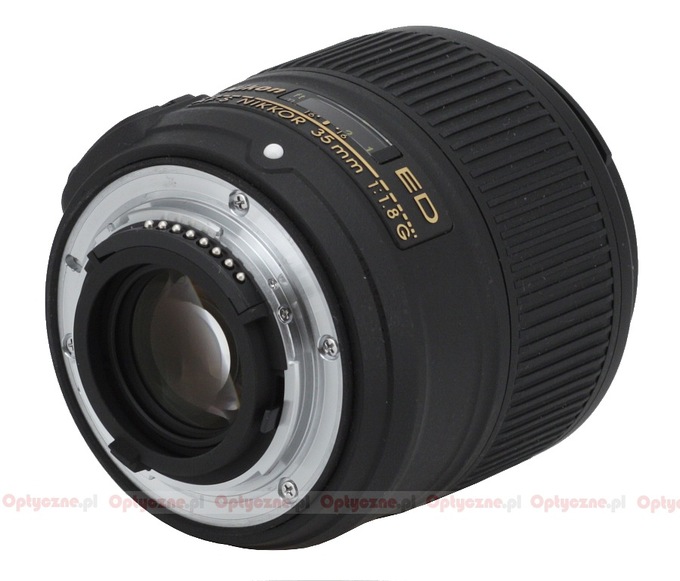 |
The proper body of the lens is covered by black plastics. Immediately next to the mount you can find a white dot making the alignment with a camera easier. Further on there is a plate with the name of the lens and its parameters; then there is a distance scale behind a window, expressed in meters and feet. Below you can also find depth of field markings but only by f/16 so only moderately useful. On the left you can see a focusing mechanism mode switch (M/A-M) and, on the other side, a serial number of the lens, info concerning the usage of a SWM motor, ED glass, aspherical elements and the size of the diameter of a filter which is 58 mm. The lens was made in China.
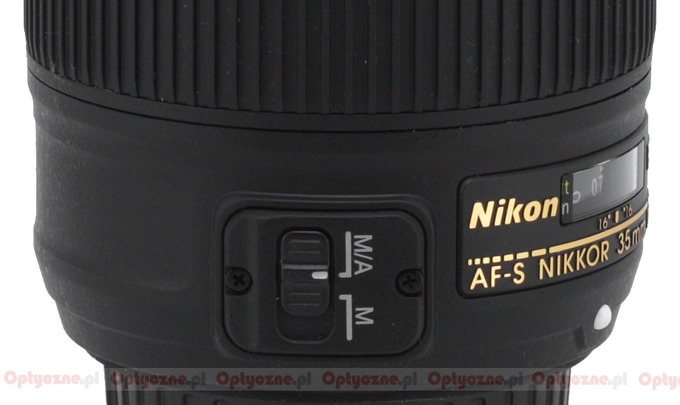 |
The next element of the casing is a ribbed manual focus ring, 28 mm wide. Unfortunately it didn’t manage to avoid a problem common for many Nikkor lenses, tested by us before – it has a bit of slack which makes precise settings rather tricky. Running through the whole distance scale takes a turn through 100 degrees.
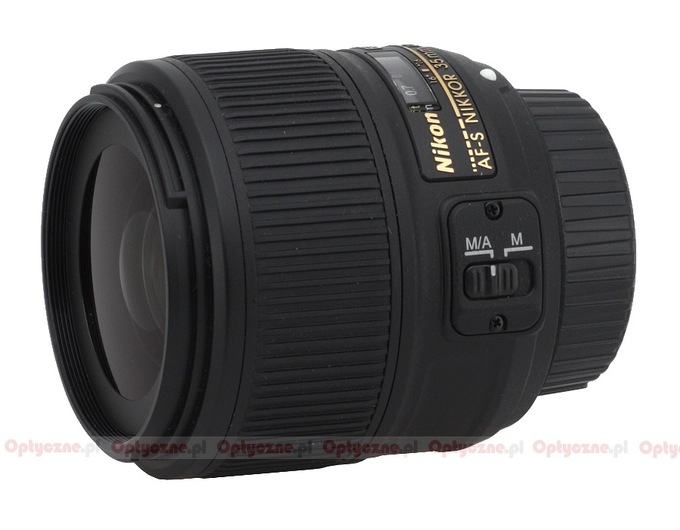 |
At the front of the lens you can find a hood thread, a non-rotating filter thread, 58 mm in diameter and a front element. The element has a diameter of less than 43 mm, it doesn’t move and is slightly convex.
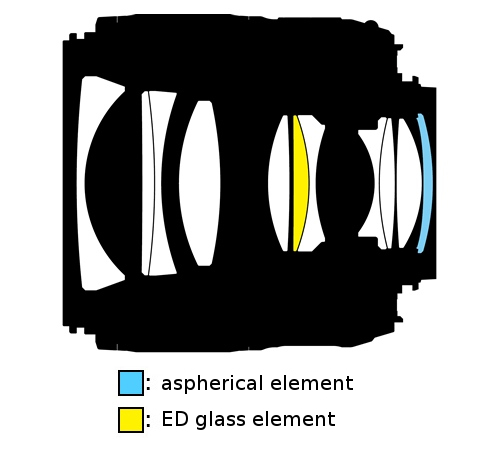 |
When it comes to the inner construction you deal here with 11 elements positioned in 8 groups. You can find among then one aspherical element and one made of low-dispersion ED glass. A round aperture with seven diaphragm blades, which can be closed down to f/16 complement the rest.
Buyers get both caps, a hood and a soft pouch in the box.
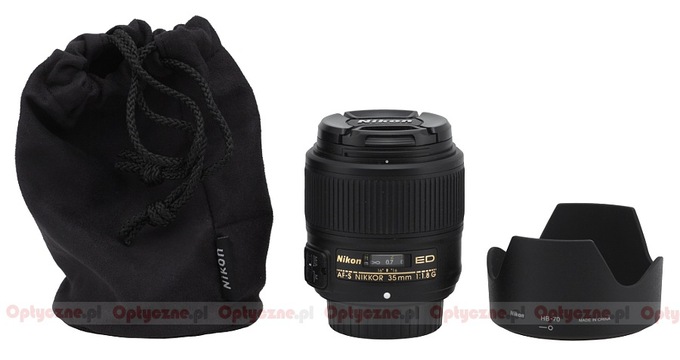 |




